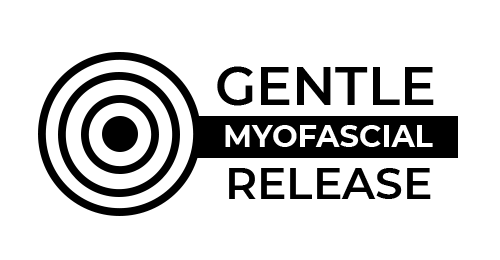Both myofascial release (MFR) and fascial stretching (FS) have gained recognition in therapeutic practices for their efficacy in relieving pain, enhancing mobility, and improving overall function. While these techniques share some common goals and focus on fascia—the connective tissue that surrounds muscles and organs—they differ significantly in their methods, approaches, and long-term outcomes. This article aims to explore the distinctions between myofascial release and fascial stretching, with a focus on how myofascial release tends to provide longer-lasting results, while fascial stretching often requires ongoing sessions for sustained effectiveness.
Understanding Fascia
Before diving into the differences between myofascial release and fascial stretching, it’s essential to understand fascia’s role in the body. Fascia is a web-like structure of connective tissue that surrounds muscles, bones, nerves, and blood vessels, acting as both a protective layer and a facilitator of movement. Healthy fascia is flexible and pliable, but injury, overuse, stress, or prolonged inactivity can cause fascia to become tight, restrictive, and painful. This tightness is often referred to as fascial adhesions or restrictions, which can lead to reduced mobility, muscle stiffness, and chronic pain.
Myofascial Release (MFR)
Definition and Technique:
Myofascial release is a hands-on technique that targets the fascia and the underlying muscles to alleviate tension and restore mobility. Practitioners use sustained, gentle pressure and energy to manually release fascial restrictions by working through layers of tissue. The technique is usually applied until the therapist senses a “release,” or softening of the fascia. The goal of MFR is to break up fascial adhesions, allowing for improved muscle function and decreased pain.
Target Areas:
MFR focuses on areas where the fascia has become tight or bound due to trauma, inflammation, or habitual poor posture. These restrictions can form trigger points—localized areas of tension that can refer pain to other parts of the body. For example, tight fascia in the lower back may cause radiating pain in the hips or legs. By releasing these adhesions, myofascial release aims to reduce pain and restore movement throughout the body.
Long-Lasting Results:
One of the distinguishing features of myofascial release is its ability to provide long-lasting results. Once fascial adhesions are released, the fascia often remains flexible and functional, especially when supported by proper movement and posture. Clients frequently report significant improvements in mobility, pain relief, and overall function after just a few sessions. The reason for this is that MFR works at a deeper level to address the root cause of the problem—fascial restrictions—rather than just stretching or elongating the tissue.
While MFR can sometimes be uncomfortable during treatment, the lasting benefits make it a highly sought-after therapy for those dealing with chronic pain, fibromyalgia, postural issues, or injury recovery. The focus on releasing deep tissue tension makes MFR ideal for individuals looking for longer-term solutions rather than temporary relief.
Fascial Stretching (FS)
Definition and Technique:
Fascial stretching, also known as fascial stretch therapy (FST), is a movement-based technique that focuses on elongating the fascia and improving flexibility. Unlike MFR, which involves sustained pressure on specific areas, FS involves dynamic stretching of the body’s fascial network through guided movements and passive stretches. During a session, a therapist moves the client’s limbs and body into various positions to stretch and elongate the fascia.
FS typically involves long, sweeping stretches, often incorporating multiple muscle groups and fascial lines at once. The therapist works with the client’s breath, using traction and gentle oscillations to create space within the joints and fascia. This stretching helps to decompress joints, enhance circulation, and improve overall flexibility and range of motion.
Target Areas:
Fascial stretching is often used to address issues of flexibility, mobility, and joint health. It is commonly recommended for athletes, dancers, or individuals who engage in physically demanding activities that place strain on the muscles and fascia. The dynamic nature of FS can also make it suitable for addressing whole-body tension and stiffness, especially in those who have tight or restricted movement patterns.
Ongoing Maintenance:
Unlike myofascial release, which tends to provide long-term relief, fascial stretching often requires regular, ongoing sessions to maintain its benefits. This is because FS primarily focuses on temporarily elongating the fascia and increasing mobility, rather than addressing the underlying fascial adhesions or restrictions. As a result, the fascia may revert to its tight, restricted state over time, especially if the client returns to old movement habits, poor posture, or lacks consistent stretching practices outside of therapy sessions.
While FS can be highly effective in improving flexibility and reducing muscle tightness in the short term, clients typically need to attend regular sessions to sustain these improvements. For individuals who engage in high-intensity physical activities, fascial stretching can be an excellent maintenance tool to prevent injuries and maintain optimal performance. However, it may not provide the same long-term resolution for aches and pains or deep fascial restrictions as myofascial release.
Key Differences Between Myofascial Release and Fascial Stretching
1. Approach and Technique
- Myofascial Release: Utilizes sustained, manual pressure on specific areas of fascia to break up adhesions and restrictions. It works deeply into the tissue to address the root causes of pain and tightness.
- Fascial Stretching: Focuses on dynamic, movement-based stretching of the fascia, often incorporating large muscle groups and promoting flexibility. It elongates the fascia rather than directly releasing adhesions.
2. Target Outcomes
- Myofascial Release: Aims to provide long-lasting relief from pain, stiffness, and dysfunction by addressing deep fascial restrictions. Once released, these restrictions are less likely to return, provided the client maintains proper movement and posture.
- Fascial Stretching: Offers temporary relief from tightness and improved flexibility. The fascia is elongated during the session but may return to a tight state over time, requiring regular maintenance.
3. Longevity of Results
- Myofascial Release: Often provides long-term relief with just a few sessions, as it works at a deeper level to resolve fascial restrictions and improve overall function.
- Fascial Stretching: Generally requires ongoing sessions to maintain flexibility and mobility, as the effects are more temporary and reliant on consistent practice.
4. Suitability for Chronic Pain
- Myofascial Release: Particularly beneficial for individuals with aches and pains, postural issues, or conditions like fibromyalgia, where deep fascial restrictions play a significant role in their discomfort.
- Fascial Stretching: Ideal for athletes, dancers, or individuals who require regular flexibility and mobility maintenance, but may not be as effective for those with chronic pain caused by deep fascial restrictions.
Combining Myofascial Release and Fascial Stretching for Optimal Results
While myofascial release and fascial stretching have distinct differences, they can also complement each other when used in conjunction. For instance, a person dealing with chronic pain might benefit from a series of MFR sessions to release deep fascial adhesions, followed by regular FST sessions to maintain mobility and prevent further restrictions from developing. This combination approach can help individuals achieve both short-term flexibility and long-term pain relief.
Athletes may find that integrating fascial stretching into their routine keeps them limber and prevents injuries, while occasional MFR sessions help address any lingering fascial adhesions or restrictions that could impede performance.
Conclusion: Choosing the Right Approach
Ultimately, the choice between myofascial release and fascial stretching depends on the individual’s needs and goals. Myofascial release offers deeper, longer-lasting results, making it ideal for those dealing with chronic pain, tightness, or fascial adhesions. On the other hand, fascial stretching is an excellent choice for those looking to maintain flexibility and mobility, especially in physically demanding lifestyles.
For many clients, a combination of both therapies may provide the best results—offering lasting relief through myofascial release and sustained flexibility through regular fascial stretching. Consulting with a skilled therapist who understands both modalities can help tailor a treatment plan that addresses your specific needs and delivers the most effective outcomes.
By recognizing the differences between these two techniques, individuals can make informed decisions about their care and work toward achieving optimal physical health and well-being.



